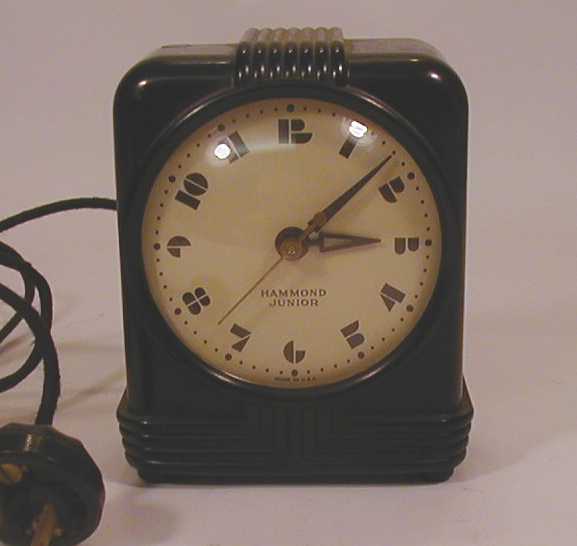
| WWT Shows | CLICK TO: Join and Support Internet Horology Club 185™ | IHC185™ Forums |

|
• Check Out Our... • • TWO Book Offer! • |
Welcome Aboard IHC185™  Internet Horology Club 185
Internet Horology Club 185  IHC185™ Discussion Site Main Page
IHC185™ Discussion Site Main Page  Horological Discussions, Questions and Answers
Horological Discussions, Questions and Answers  Clocks, Including 400-Day Discussions
Clocks, Including 400-Day Discussions  Hammond Junior Electric Alarm Clock
Hammond Junior Electric Alarm Clock
 Internet Horology Club 185
Internet Horology Club 185  IHC185™ Discussion Site Main Page
IHC185™ Discussion Site Main Page  Horological Discussions, Questions and Answers
Horological Discussions, Questions and Answers  Clocks, Including 400-Day Discussions
Clocks, Including 400-Day Discussions  Hammond Junior Electric Alarm Clock
Hammond Junior Electric Alarm ClockGo  | New Topic  | Find-Or-Search  | Notify  | Tools  | Reply to Post  |  |
I am full of clock questions today! In addition to the usual knobs for setting the time and alarm, there is a knob that is marked start with an arrow pointing counter clockwise. When I first brought this clock home and plugged it in it did not run. When I spun the knob a few times, it took right off. Can somebody explain why this clock is setup this way rather than starting as soon as you plug it in. Thanks. Jack Davis  | |||
|
I don't know the reasoning behind this, I do know that it is quite common in older clocks. I have done several hammonds,ST,Sessions with this type of motor. Greg Greg Reeves | ||||
|
I'm with Greg on this one, Jack. I don't know the scientific reasons why the motors were not self starting, but many of them weren't. Some even advertised "spin starting". Thanks for posting this one. I love the deco styling of the numbers and case elements. Tom Seymour NAWCC# 41293 IHC Executive V.P. | ||||
|
Jack, I think the first electric clocks were not self starting. I don't know if it was by design or not. The use of electric clocks spread in the USA with electrification of rural areas. (Part of the demise of the mechanical clock industry.) That electricity was not always as dependable as what we experience today and there were numerous outages. A short outage could cause problems and these clocks were especially useful in that they would not start with an interruption of a few cycles. (60 cycles per second) Before the electric clock, people were confined to setting a watch with a local public clock or with Western Union at the train station. They then carried the watch back home and set all of the clocks by it. Those days are really not that far behind us. I can remember the Telechron clocks in my grade schools having a red dot in the dial if the electricity had been interrupted. Not all of the houses in our town had indoor plumbing or pressurized water systems at that time either. I heard on public radio today that computers were predicted to weigh less than a ton and a half before the invention of the transistor. My, how we have progressed, huh? Best Regards, Dick | ||||
|
Hi All, Thanks for your replies. These little items of Americana from an era not too long ago but, by and large, forgotten are really pretty neat. Dick, I know what you mean. When I tell kids today that my hand held calculator in school was a number 2 pencil and a piece of paper I usually get a blank stare of disbelief. Jack | ||||
|
| Powered by Social Strata |
| Your request is being processed... |
|
©2002-2025 Internet Horology Club 185™ - Lindell V. Riddle President - All Rights Reserved Worldwide

